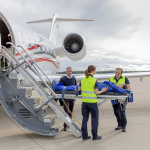Introduction
The airline reservation system, a cornerstone of modern air travel, is a complex mechanism that allows travelers to book flights and purchase airline tickets. Whether it’s for business or leisure, the system is a critical component of the aviation industry, connecting passengers with airlines all around the globe. Over the years, the airline reservation system has evolved significantly, integrating cutting-edge technology to provide a seamless, efficient, and user-friendly experience.
The History of the Airline Reservation System
The first airline reservation systems were manual, necessitating travel agents to check flight schedules and availability in paper-based ledgers. This method was labor-intensive and prone to errors. By the mid-20th century, as air travel became increasingly popular, the demand for a more efficient reservation system emerged.
American Airlines, in collaboration with IBM, developed the Semi-Automated Business Research Environment (SABRE) in the 1960s. This was the first automated airline reservation system, which used large mainframe computers to handle bookings. As technology advanced, these systems became more sophisticated, providing real-time information about flight schedules, fares, and seat availability.
The Role of the Global Distribution System (GDS)
The Global Distribution System (GDS) has played a pivotal role in the evolution of airline reservation systems. Initially developed by airlines, GDSs such as Amadeus, Sabre, and Travelport, serve as intermediaries between airlines and travel agencies, providing real-time access to flight information from various airlines. This allows travel agents to compare fares, schedules, and availability across different airlines and make reservations on behalf of customers.
Online Airline Reservation Systems
The advent of the internet revolutionized the airline reservation system. Now, passengers can book flights directly from their homes, using either an airline’s website or online travel agencies. These platforms integrate with the airline’s reservation system or GDS, enabling real-time bookings.
Moreover, many airlines and online travel agencies offer mobile apps, allowing passengers to book flights, select seats, check-in, and access boarding passes right from their smartphones. This convenience has significantly improved the passenger experience, making travel planning more accessible and flexible.
Artificial Intelligence and Personalization
Artificial Intelligence (AI) has been making waves in the airline industry, and airline reservation systems are no exception. AI can analyze vast amounts of data to predict flight demand, enabling airlines to optimize fares dynamically. Moreover, AI-powered chatbots can assist passengers with their bookings, providing 24/7 customer service.
Another trend in the airline reservation system is personalization. By analyzing passengers’ travel history and preferences, airlines can provide personalized offers and recommendations, enhancing the overall customer experience.
Challenges and Future Developments
Despite the advancements in the airline reservation system, challenges persist. Security is a significant concern, with systems holding vast amounts of sensitive customer data. Therefore, airlines need to invest in robust cybersecurity measures to protect against data breaches.
Additionally, the COVID-19 pandemic has underscored the need for flexibility in bookings. Many airlines have adapted their reservation systems to offer more flexible booking policies, including free changes and cancellations.
Looking to the future, blockchain technology holds promise for the airline reservation system. By decentralizing the reservation process, blockchain could enhance security and transparency, ensuring that all parties involved in a transaction have access to the same information.
Conclusion
The airline reservation system is an integral part of the aviation industry, facilitating seamless travel for millions of passengers every year. It has come a long way from its early beginnings, integrating advanced technologies to provide real-time information, greater convenience, and personalized experiences. As technology continues to evolve, the system is set to become even more efficient, enhancing the overall travel experience for passengers worldwide.




